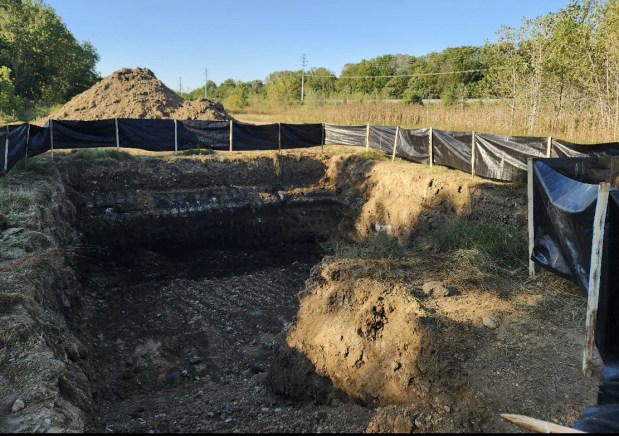With a master plan for development encapsulating both downtown Waukegan and the city’s lakefront, activity to draw developers to the central business district is taking hold while changing the face of the lakefront is moving at a slower pace.
Already working with the Waukegan Planning & Zoning Commission, the Waukegan Community Development Partnership is proposing the renovation of the one-time YMCA on Clayton Street and a former restaurant on Genesee Street into multiuse facilities.
Artists commissioned by the city to paint murals in downtown crosswalks are working on their projects, while more public art is being sought.
Mayor Ann Taylor said plans for the lakefront will take longer, in part because of contaminated land from the city’s industrial past and the reluctance of the Canadian National Railway to part with its right of way bordering the western part of the lakefront area.
“We see it as a mixed-use area which would be residential and commercial,” Taylor said. “We want to hear from developers to learn what they think they can do. We also have to know how deep we can dig.”
Waukegan’s plans for a redeveloped lakefront from Lake Michigan’s shoreline to the vicinity of the Amstutz Expressway are underway, with the cleanup of a one-time contaminated industrial site taking place as the city waits for developer interest and railroad cooperation.
On the south lakefront, which is south of Belvidere Road, an effort to remove contaminated soil from an 11-acre city parcel once owned by Fansteel Metals — the company moved out of the city in 1987 — is the first step to readying the site for development.
Crews are in the process of removing 10,000 tons of contaminated soil from the property, covering the empty space with three feet of topsoil. David Motley, the city’s public relations director, said completion of the project is expected by the end of the year.
“Once the process is complete, we’ll look for proposals,” he said. “It will be something like low-density single-family townhomes with stacked floors, maybe three or four stories.”
Motley said many potential development sites on the south lakefront are privately owned, like the 12-acre former Diamond Scrap Yards location. He said developers are aware of the property.
“Developers will contact private owners,” Motley said. “Eventually they will go through the city approval process.”
A 125-acre site of city-owned land once the home of Outboard Marine, located roughly north of the city beach and south of the former electric plant, is also city-owned, according to the master plan. Approximately half can be developed. Most buildings there would be five stories or less, but some could be taller.
Another major landowner on the lakefront is the Waukegan Port District. Jack Dye, the district’s chair, said it owns everything roughly west from the shoreline to the railroad tracks, between the fuel dock at the south end of the marina to the commercial dock by the National Gypsum plant to the north.
One thing is certain about the Port District land. Dye said none of it will be sold. It will be developed under terms of a ground lease, like Bay Marine’s sale and storage facility. The district is also in the process of testing soil, and awaiting results of the raw data which is under review.
“We have to learn what developers may want,” Dye said. “We have to know how deep they might have to dig to be able to improve the land. We don’t use any taxpayer money. Everything comes from user fees. We’re not a taxing body.”
Each time a discussion of lakefront development is raised, the issue of the Canadian National tracks is discussed. The right-of-way runs from the decommissioned coal plant south to the city limits and into North Chicago. Taylor said it is the biggest barrier.
“It’s tough, because we need to get the Canadian National Railway (land) before we can do economic development,” she said. “The tracks were used to get coal to the coal plant, but they don’t use coal anymore.”
While municipalities can use the power of eminent domain to take private property for a reasonable price, Stewart Weiss, an attorney for Waukegan corporation counsel Elrod Friedman, said railroads are different from other land owners.
Weiss said railroads are regulated by both the federal Surface Transportation Board and the Illinois Commerce Commission. A tradition of protecting supply chains makes the use of eminent domain more challenging.
“Railroads have a number of strategies which foreclose the possibility of straight condemnation,” he said.





